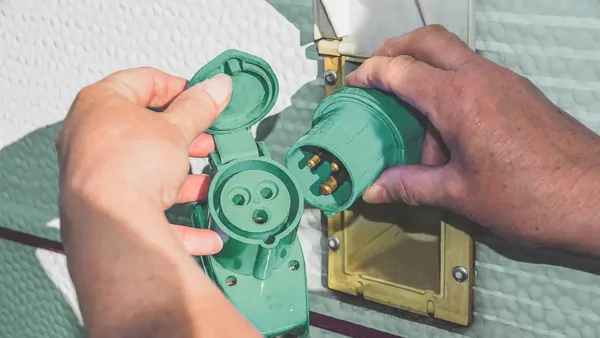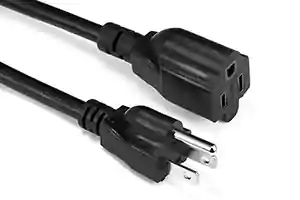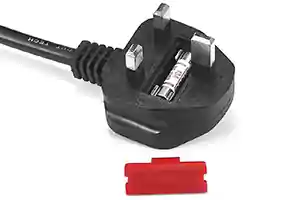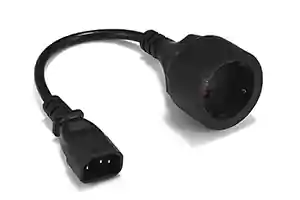It is always the same image in each campsite or motorhome area: no sooner has a caravan or motorhome reached the location allocated to it than the crew jumps out of the vehicle. After a quick search in the gas box or an outside storage compartment, the cable drum and the blue CEE plug are on the floor. Then the CEE plug is quickly plugged into the exterior pocket of the vehicle and connected to the cable drum. After unwinding the cable drum, the plug is inserted into the power column. And the vehicle’s electrical devices already work with electricity from the campsite or pitch.

Table of Contents
What is a CEE plug?
CEE stands for “Commission on the Rules for the Approval of the Electrical Equipment” – translated as “International Commission for the Regulation of the Approval of Electrical Equipment.” CEE plugs are available for a wide variety of applications. As it is called, the round plug is based on the international standard IEC 60309, which generally applies to “plugs, sockets, and fittings for industrial applications.”
What is available for EWC plugs?
These circular connectors are distinguished by their color: for example, in a frequency range of 50/60 Hz, purple corresponds to a voltage of 20 to 25 volts, white is 40 to 50 volts, and yellow is 100 to 130 volts. Our blue CEE plugs mark the 200 to 250 volts and red for 380 to 480 volts. There is also black for 500 to 690 volts and green with a frequency range of 60 to 500 Hz for a voltage level of 20 to 500 volts. All connector systems have one thing in common: their different designs make it impossible to accidentally connect plugs and sockets of varying amperage.
How does a CEE plug work?
The two most common connectors are red for a three-phase alternating current with a neutral and protective conductor and a nominal voltage of 400 volts. In contrast, the blue connector type, the camping plug, has an outer conductor and a neutral and protective conductor and is designed for a voltage of 230 volts -.
Officially, they are called “L + N + PE-6h connectors”. Here, L represents the current-carrying conductor, N the earthed neutral conductor, and PE the protective conductor, which is placed at 6 o’clock, i.e., at the bottom.
When designing the connectors, the developers emphasized optimal current transmission thanks to large contact surfaces between the pins of the plug and the receptacle sockets. Brass split sleeves with steel tension springs are used for the sleeves. Therefore, the entire surface of the shell is effective for current transfer, and at the same time, unwanted heating at high current loads is avoided.
The production of files is standardized so that there are no commercially available plugs that do not meet the high European safety requirements. In addition, the sockets are more robust than standard domestic Schuko sockets. They are splash-proof and can be continuously charged with a current of 16 amps.
Here Europe is united for once
You might also sometimes wonder why things cannot be more uniform in Europe. The CEE adapters are a prime example of the opposite. These are standard throughout Europe on campsites, motorhome areas, and marinas. Even manufacturers of recreational vehicles, such as caravans and motorhomes and motor and sailing yachts, exclusively use the blue caravan sockets for the power supply. The shore current reaches the vehicle.
You don’t have to worry about the voltage in Europe. Typically this is 220 to 230 volts. Most campsites have supply columns into which your CEE connector fits. However, many camps also use typical national connections. You will then need a suitable adapter. However, any campsite operator will be happy to help you in this regard.
So how does it work with the electricity from the campsite?
Once there was a bucket of cold water next to the trailer for chilling beer. Today there is an electric cooker. Electric power, which supplies the energy necessary for recreational vehicles, is now the norm. After all, the coffee machine, refrigerator, and lighting should contribute to the usual comfort of camping trips. In addition, the vehicle battery or that of the cell phone, tablet, or camera needs their juice for the next use.
Your motorhome or caravan is fitted with a CEE plug socket, which is housed in a box located in the outer wall of the vehicle. Inside, the cable is fused and goes to electrical devices and 230-volt outlets in your vehicle. If you now open the flap, you will discover the three pins of the CEE adapter. The CEE connector of your power cable is plugged in here. Directly connect the other end to the power column of your parking space, and your vehicle will already have 230 volts.
Safe with the EWC
Besides the robustness and protection against dust and moisture, there are several other reasons for using CEE plugs. As we have already mentioned, it is impossible to connect a CEE plug “incorrectly.” In addition, the connections are consistently designed for 16 amps. Many campsites often have a 4, 6, or 10 amp low fuse power supply. Your kettle or hairdryer can quickly blow your location fuse. However, you can easily calculate the amps needed for your electrical devices:
Watt: Volt = Ampere.
This means: your hairdryer has 850 watts. Divide that number by 230 volts, and you get about 3.7 amps.
Which CEE plug should I choose?
Play it safe with a CEE cable. You thus have a CEE plug at the front for the external socket of your vehicle and a CEE plug for the socket column of the campsite. It would help if you aimed for a length of 25 meters to cover the distance to the nearest distribution box. As some campsites separate refueling stations up to 40 meters, you can also cover longer distances with this length.
Make sure the power cable is rubber and has a diameter of at least 2.5mm². Rubber cables have the great advantage of being insensitive to UV rays, rain and snow, and mechanical influences, thanks to the standardized protection class IP44.
You can also use adapter cables that you connect via an extension cable. These are available on cable drums in various lengths. However, when using the cable, unwind it completely from the drum to prevent heat build-up. If you secure the connections with suitable rain and dirt safety boxes, nothing can go wrong.
Conclusion on the CEE file
You cannot avoid buying a CEE adapter, whether with a tent, caravan, or motorhome, camping. You need the CEE plug and an extension cord if you want to be supplied with electricity at your campsite. Thanks to the standards and manufacturing guidelines of the adapters, you are safe when using them, and you can enjoy the electricity of the camp or the site without any worries.




